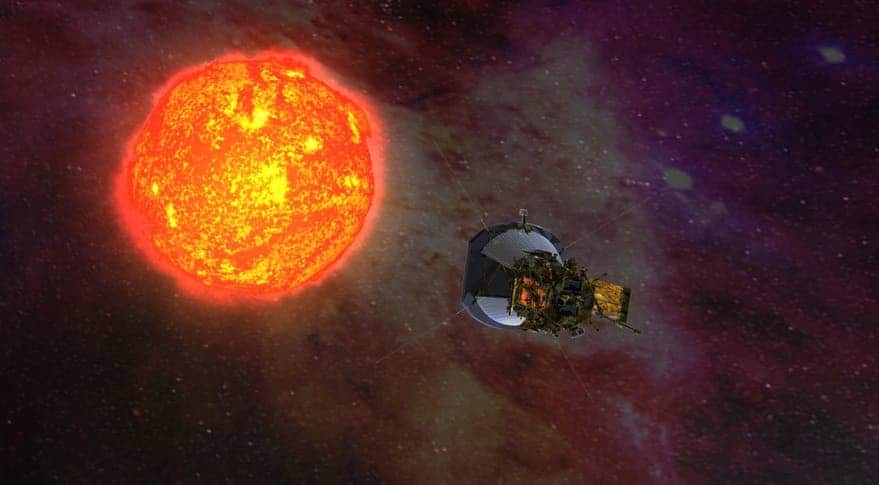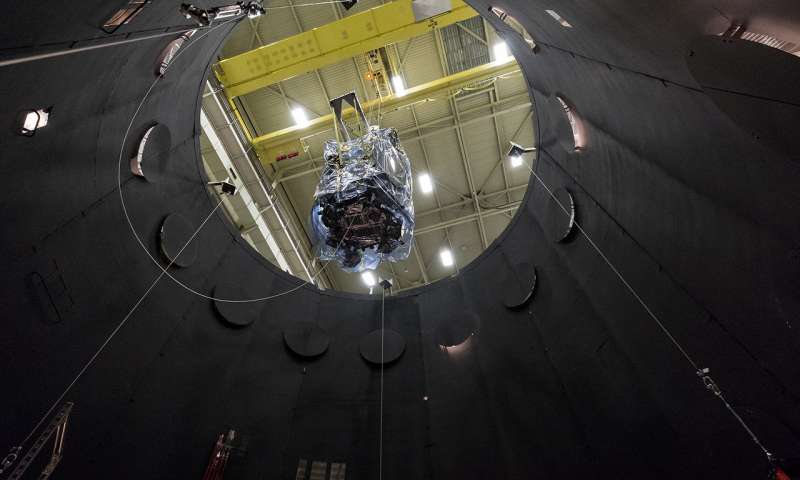A car-sized spacecraft called the Parker Solar Probe is set to make history after it launches for an unprecedented destination: the sun. Touted as humanity’s first visit to a star, the spacecraft will fly through the sun’s outer atmosphere, known as the corona, getting seven times closer to the star’s surface than any spacecraft before it.

The one-of-a-kind spacecraft will employ a combination of in-situ measurements and imaging to probe the corona in unprecedented detail, revealing novel insights about the origin and evolution of the sun and the processes that govern it. In doing so, scientists will be able to improve their ability to forecast potentially hazardous solar storms and flares that can affect life and technology on Earth.
One such threat is represented by outbursts of coronal mass — huge bubbles of gas threaded with magnetic field lines that are ejected from the Sun over the course of several hours. When these strike the Earth, the consequences can be catastrophic. Some even claim a really powerful coronal mass ejection could fry most electronics on Earth or our communication satellite fleet up in orbit. Some of you might remember the 1989 Quebec incident, when the whole city had a blackout after the entire grid got fried, causing an estimated $2 billion Canadian in damage at the time. Besides blackouts, CMEs can also disrupt GPS signals and radio telecommunications.
Icarus 2.0

Parker will come as close as 3.9 million miles (6.3 million km) to our star’s surface, well within Mercury’s orbit, hurtling around the sun at approximately 430,000 mph (700,000 kph).
To achieve their goals, NASA engineers protected the spacecraft with a 4.5-inch-thick (11.4 cm) carbon-composite shield which can withstand temperatures in excess of 2,500°F (1,377 C). The same shield will also protect Parker and its delicate instruments from the frostbite of space. Soon enough, we’ll know if the spacecraft will be ready for its launch scheduled for some time in the July 31 – Aug. 19, 2018 window. That’s because last week one of the probe’s most important tests began.
Engineers placed Parker into a thermal vacuum chamber where, over the course of the seven weeks, it will experience various simulated challenges of the kind it will be subjected to during the mission. Inside the dark, 40-foot-tall chamber, the spacecraft will be chilled to -292°F (-180°C) to simulate the chilling embrace of space, then blasted with the kind of heat the probe will encounter at its closest approach to the sun. Under such extreme conditions, NASA engineers will test the probe’s instruments and equipment such as its solar panels, which flap open and close like a bird’s wings.
Once deemed ready, Parker will be launched from a Delta IV Heavy rocket towards Venus’ orbit, where it will perform seven flybys over nearly seven years to gradually bring its orbit closer to the sun and into its corona.
Scientists hope that the data beamed back by the probe will help answer some very puzzling questions about the sun and its quirky phenomena. For instance, solar scientist Eugene Parker — the man after whom the spacecraft is named — first discovered in the 1950s that the solar wind of charged particles streaming from the corona moves faster than the speed of sound. To this day, we don’t know exactly why. Other mysteries which the probe might answer would be why the corona is hotter than the sun’s surface and how particles are ejected out of the corona and into space.
We’ve learned a lot about the sun in the last half-century but some things can never be settled unless you get close enough. Today’s technology finally makes it possible to send a spacecraft close enough to fly through the sun’s scorching atmosphere. Let’s just hope that, unlike Icarus, Parker’s wings won’t burn before it finishes its mission.


